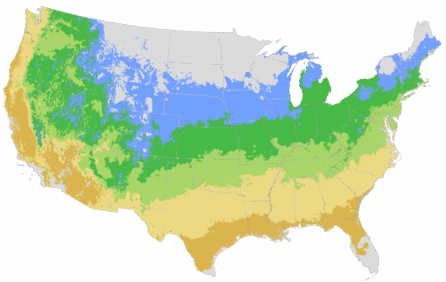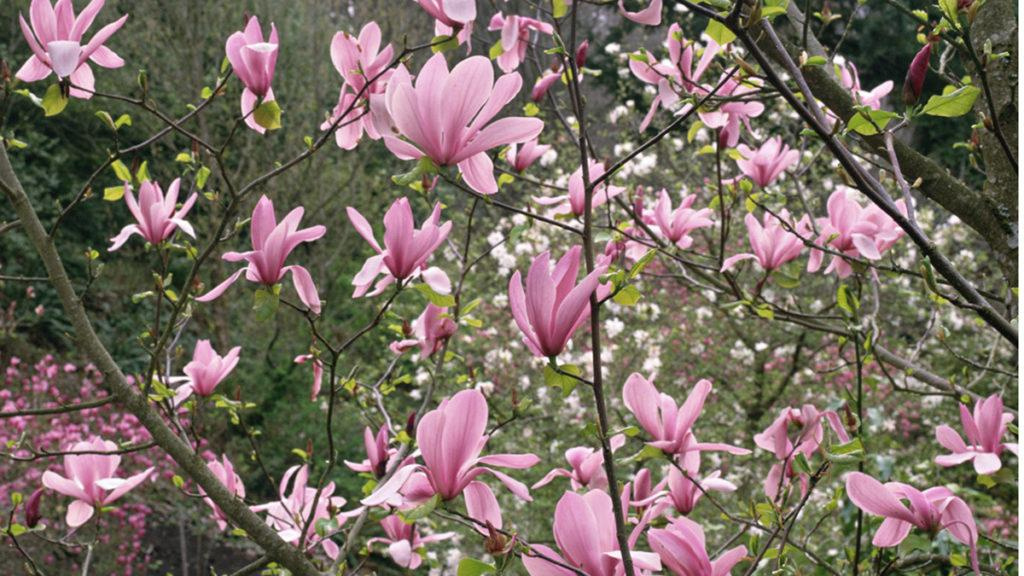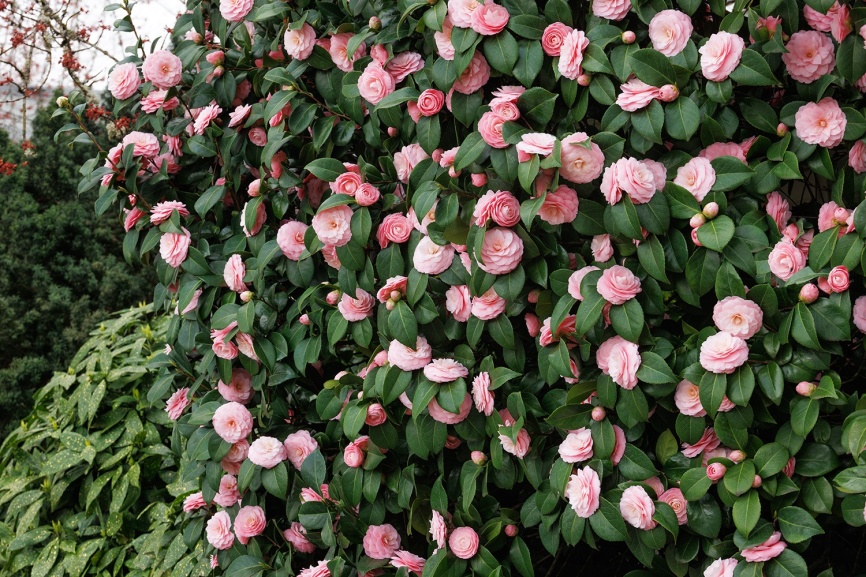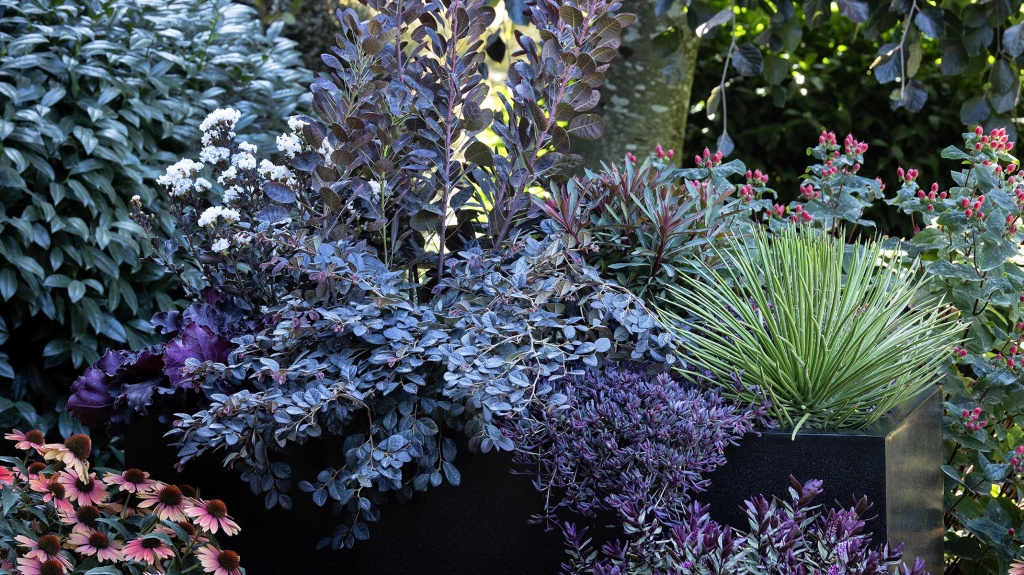You're growing in this Zip Code:
Change LocationDiscover Plants for Your Area
Vulcan Magnolia
Magnolia x 'Vulcan'
Retailers Near You
| Description | Vivid, large, fragrant flowers reach up to 10 to 12 inches, composed of thick, heavy, brilliant magenta petals. Blooms emerge on bare stems in spring; a dense crown of green foliage that follows will add a nice touch to the summer landscape. When young, its form is erect and open branched; becomes more rounded with age. Useful as a large, multi-trunk shrub or trained as a medium-sized specimen tree. Deciduous. |
|---|---|
| Bloom Time | Spring |
| Deciduous/Evergreen | Deciduous |
| Special Features | Easy Care |
| Problems/Solutions | Deer Resistant, Rabbit Resistant |
| Growth Rate | Moderate |
| Growth Habit | Rounded |
| Flower Attributes | Flowers for Cutting, Fragrant, Showy Flowers |
| Design Ideas | Plant Vulcan in the front yard, where it will be the talk of the neighborhood. Its potent red flowers are unusual among Magnolia and are so vivid they can be seen at the far end of a deep city lot. Just as beautiful up close, around foundations, patios and porches. Narrow enough to dress up side-yards where it can be viewed from indoors. Super for marking gates and entries, or as a pair in formal shrub or perennial gardens. |
| Flower Color | Purplish-pink |
| Foliage Color | Green |
| Companion Plants | Lily-of-the-Valley Shrub (Pieris); Hydrangea (Hydrangea); Snowberry (Symphoricarpos); Camellia (Camellia); Azalea (Azalea); Clethra (Clethra) |
| Care Instructions | Provide deep, enriched, moist, well-drained soil with a neutral to acidic pH. Provide protection from harsh winter winds. Water deeply, regularly in first few growing seasons to establish an extensive root system; once established, reduce frequency. Fertilize in early spring. Prune for structure only. |
| History | A classic Magnolia hybrid, and the parent of many successful hybrids. Felix Jury of New Zealand, a world renowned and highly respected Magnolia breeder, raised Vulcan and used it as a parent plant to some of his notable hybrids. Magnolia x 'Vulcan' is an interspecies hybrid of M. campbellii 'Lanarth' x M. liliiflora. The large, vibrant flowers are inherited from its M. campbellii parentage; much like its M. liliiflora parentage, it has a more elongated bloom with narrower petals, and is less susceptible to late spring frost damage. |
| Lore | There are 35 species in the genus Magnolia named after Pierre Magnol, an 18th century botanist of Montpellier, France. Early breeding of Asian magnolia species began in France because the first imported species arrived there early on. The Jesuit missionaries in China were French and often became amateur botanists, collecting new plants to be sent back to Jardin des Plantes in Paris. Not until later did many of these species become established in British horticultural circles from which our English language texts originate. |
| Description | Vivid, large, fragrant flowers reach up to 10 to 12 inches, composed of thick, heavy, brilliant magenta petals. Blooms emerge on bare stems in spring; a dense crown of green foliage that follows will add a nice touch to the summer landscape. When young, its form is erect and open branched; becomes more rounded with age. Useful as a large, multi-trunk shrub or trained as a medium-sized specimen tree. Deciduous. |
|---|---|
| Bloom Time | Spring |
| Deciduous/Evergreen | Deciduous |
| Special Features | Easy Care |
| Problems/Solutions | Deer Resistant, Rabbit Resistant |
| Growth Rate | Moderate |
| Growth Habit | Rounded |
| Flower Attributes | Flowers for Cutting, Fragrant, Showy Flowers |
| Design Ideas | Plant Vulcan in the front yard, where it will be the talk of the neighborhood. Its potent red flowers are unusual among Magnolia and are so vivid they can be seen at the far end of a deep city lot. Just as beautiful up close, around foundations, patios and porches. Narrow enough to dress up side-yards where it can be viewed from indoors. Super for marking gates and entries, or as a pair in formal shrub or perennial gardens. |
|---|---|
| Flower Color | Purplish-pink |
| Foliage Color | Green |
| Companion Plants | Lily-of-the-Valley Shrub (Pieris); Hydrangea (Hydrangea); Snowberry (Symphoricarpos); Camellia (Camellia); Azalea (Azalea); Clethra (Clethra) |
| Care Instructions | Provide deep, enriched, moist, well-drained soil with a neutral to acidic pH. Provide protection from harsh winter winds. Water deeply, regularly in first few growing seasons to establish an extensive root system; once established, reduce frequency. Fertilize in early spring. Prune for structure only. |
|---|
| History | A classic Magnolia hybrid, and the parent of many successful hybrids. Felix Jury of New Zealand, a world renowned and highly respected Magnolia breeder, raised Vulcan and used it as a parent plant to some of his notable hybrids. Magnolia x 'Vulcan' is an interspecies hybrid of M. campbellii 'Lanarth' x M. liliiflora. The large, vibrant flowers are inherited from its M. campbellii parentage; much like its M. liliiflora parentage, it has a more elongated bloom with narrower petals, and is less susceptible to late spring frost damage. |
|---|---|
| Lore | There are 35 species in the genus Magnolia named after Pierre Magnol, an 18th century botanist of Montpellier, France. Early breeding of Asian magnolia species began in France because the first imported species arrived there early on. The Jesuit missionaries in China were French and often became amateur botanists, collecting new plants to be sent back to Jardin des Plantes in Paris. Not until later did many of these species become established in British horticultural circles from which our English language texts originate. |
Retailers Near You
About Us
We have been pioneers and craftsmen in the art of growing plants for nearly
100 years. Since our founding in Southern California by Harry E. Rosedale, Sr.
in 1926, we have been absolutely dedicated and obsessed with quality.
We have been pioneers and craftsmen in the art of growing plants for nearly 100 years. Since our founding in Southern California by Harry E. Rosedale, Sr. in 1926, we have been absolutely dedicated and obsessed with quality.








